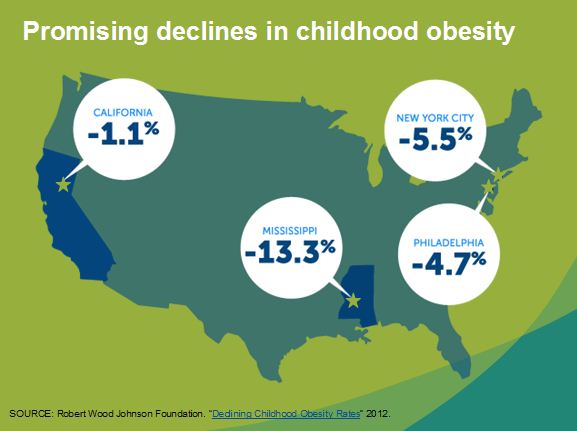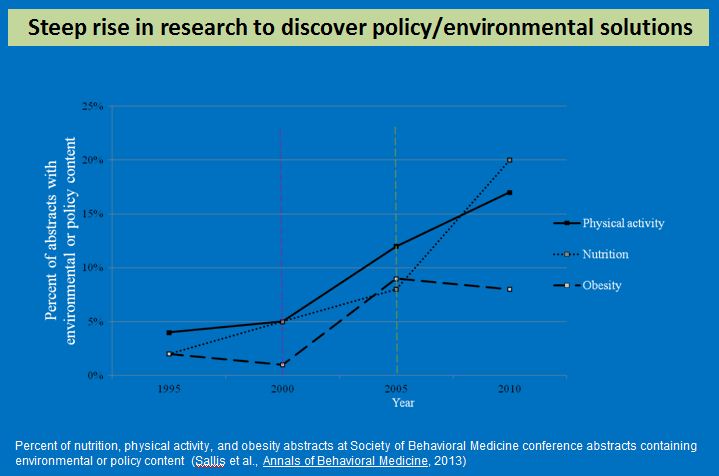
President's Message

Dawn K. Wilson, PhD
Behavior Matters: The Impact and Reach of Behavioral Medicine
It is with great pleasure that I begin my term as the 35th President of the Society of Behavioral Medicine. I came back from the Annual Meeting in San Francisco energized and excited about the innovative advances that our SBM members presented throughout the conference. After reflecting on the conference I decided to highlight some key research in my President’s Message as a means for disseminating timely findings that are innovative and which have potential for high impact and reach.
In particular, SBM researchers have continued to make strong advances in the policy area and the presentation on “Early Evidence that Policy Changes are Working to Reduce Children's Obesity Levels and Daily "Energy Gaps": Lessons Learned for Future Research” left me really encouraged about the gains we are making in this critical area. Organized by the Robert Wood Johnson Foundation (Authors: C. Tracy Orleans, PhD, Robert Wood Johnson Foundation; Tina J. Kauh, PhD, Robert Wood Johnson Foundation; Amy E. Woodrum, Robert Wood Johnson Foundation; Claire Wang, MD, ScD, Columbia University; James F. Sallis, PhD, University of California, San Diego, Active Living Research; Laura C. Leviton, PhD, Robert Wood Johnson Foundation; Neel Koyawala, Robert Wood Johnson Foundation; Diego Reinero, Robert Wood Johnson Foundation; and Marjorie A. Gutman, PhD, Gutman Research Associates), this session focused on progress in discovering, applying and evaluating interventions with the potential to halt or reverse rising trends in youth obesity and to address disparities in its prevalence and health tolls—highlighting SBM members’ contributions to this work (see Figure 1 below).
Fig. 1 Promising declines in childhood obesity. Source: Robert Wood Johnson Foundation.
This presentation highlighted that after three decades of climbing steadily, childhood obesity levels appear to be leveling off in response to media coverage and broad-spectrum school- and community-based policy/environmental strategies to raise children’s everyday levels of physical activity and lower their intake of high-calorie, non-nutritive foods and beverages – reducing the cumulative small daily “energy gaps” (surpluses of calories consumed over those expended) which produced the epidemic over a period of 30-40 years. The panel focused on declines in childhood obesity levels recently reported by cities and states across the country following the implementation of comprehensive (i.e., multi-component) strategies, including state-wide restrictions on high calorie snacks and beverages in school or the creation of joint use agreements for community use of school recreational facilities during non-school hours (see Figure 2 below).
Fig. 2 Steep rise in research to discover policy/environmental solutions. Source: Sallis et al., Annals of Behavioral Medicine, 2013.
Presenters in this session portrayed the growing number of state and city-wide successes as hopeful signs that the epidemic can be reversed, and highlighted unique opportunities to learn more about what it will take to achieve further progress in halting or reversing childhood obesity levels overall and in high-risk socioeconomic and racial/ethnic populations. For instance, California (the site of this year’s SBM meeting) offers enormous research opportunities – both because childhood obesity levels declined statewide, and because wide variability across the state – with falling rates in some counties and rising rates in others – affords the chance to identify critical ingredients for positive change. Philadelphia, the site of next year’s meeting, also was singled out for showing that economically-challenged communities with high rates of childhood obesity can not only reduce their rates overall, but do so in a way that helps to close the disparities gap. In response to broad cross-sector efforts, obesity levels fell city-wide among Philadelphia’s K-12 public school students, with largest improvements among African American boys and Hispanic girls. Panelists concluded that these declines in BMI have temporal associations with policy and environmental changes that likely affect the balance of calories-in and calories-out, and which help us narrow our focus onto the pool of interventions that are both powerful enough to merit further tests and feasible for many communities to employ. Panelists recommended improved measurement of intervention elements and outcomes, introduced a new “caloric calculator” for estimating intervention effects on children’s average daily “energy gaps”, and closed with recommendations for translating breakthrough research results and recommendations to policy makers and community leaders.
Given the theme on technology this year, also I found the presentation of C. Barr Taylor, MD, Stanford University School of Medicine, “Using Technology for Prevention in Defined Populations: Body Image, Obesity, and Eating Disorders” extremely innovative. His work provides a model for how technology can increase the reach of evidence-based interventions to provide combined universal, targeted/selected and indicated interventions to defined populations and increase relevance by tailoring programs to individual needs. He notes the need for behavioral science researchers to focus on outcomes in populations, to use new models for more rapid program development, revision and implementation and to use technology strategically, recognizing where links to “off-line” approaches are key.1, 2, 3 In particular, these population approaches that integrate technology into community-based contexts -such as his work in college students and school-based populations- have the potential to make national and international impact on improving health behaviors at a population level (see his full 2013 Annual Meeting presentation slides for specific examples of his work).
The research presentations that I have highlighted here are just a few examples of the high impact and reach related efforts that will continue to provide the scientific base for policy, public health and health care reform efforts in the coming year. As President it is my goal to not only broaden our visibility as a scientific community but to partner with leading organizations that are already at the forefront of influencing national policy. So stay tuned for more exciting updates as our policy leaders on the SBM board continue to build on SBM strengths in these areas over the coming months.
Look for monthly updates on exciting advances as I continue to add research contributions of SBM members each month and provide updates on expanding our strategic plans for partnering with like-minded organizations on health policy issues. Our Program Committee Chair Elliot J. Coups, PhD, is already working hard on planning for an outstanding 35th Anniversary Program for the Society of Behavioral Medicine to be held in Philadelphia, on April 23-26, 2014. Given our theme is “Behavior Matters: The Impact and Reach of Behavioral Medicine” we have already lined up fantastic speakers in such areas as health economics and translation of evidence-based interventions. Look for on-going updates each month here on the SBM website President’s Message.
I welcome your thoughts and input on the activities in the coming months and I highly recommend joining our society if you are not already a member. You will receive Annals of Behavioral Medicine and Translational Behavioral Medicine as part of your membership benefits, which are two very visible journals in the field. If you want to be more involved in our society please contact us and we will assure that opportunities are provided for you.
All the Best,
Dawn K. Wilson, PhD
President
References
- Taylor CB, Bryson S, Luce KH, Cunning D, Celio A, Abascal LB, Rockwell R, Dev P, Winzelberg AW, Wilfley DE. Prevention of eating disorders in at-risk college-age women. Archives of General Psychiatry, 2006, Aug, 63:831-8. PMID: 22137366
- Jones M, Luce K, Osborne MJ, Taylor K, Cunning D, Doyle AC, Wilfley DE, Taylor CB. A randomized controlled trial of an internet-facilitated intervention for reducing binge eating and overweight in adolescents. Pediatrics, 2008,Mar;121(3):453-62.
- Taylor CB, Taylor K, Jones M, Shorter A, Yee M, Genkin B, Burrows A, Kass AE. Rizk M, Redman M, Romer P, Williams J, Wilfley DE. Obesity prevention in defined (high school) populations, International Journal of Obesity Supplements, 2012, 2, S30–S32; doi:10.1038/ijosup.2012.8

